
In Photos: Peek Into the World of Prairie Dogs
Prairie Dog
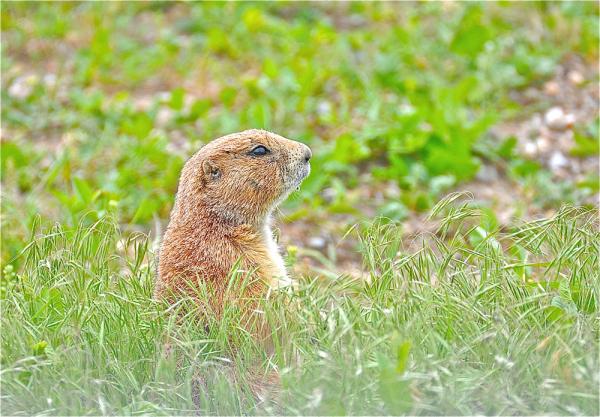
Black-tailed prairie dogs (Cynomys ludovicianus) are diurnal, burrowing animals found only in the great grassland prairie of North America. Prairie dogs are not dogs at all but are members of the very large rodent family.
Prairie Dog

The historic range of the black-tailed prairie dog extends across the prairie from Canada to Mexico, including the 11 states of Arizona, Colorado, Kansas, Montana, Nebraska, New Mexico, North and South Dakota, Wyoming, Oklahoma and Texas. It is estimated that 24 million black-tailed prairie dogs are found across 2.4 million acres of prairie.
Prairie Dog
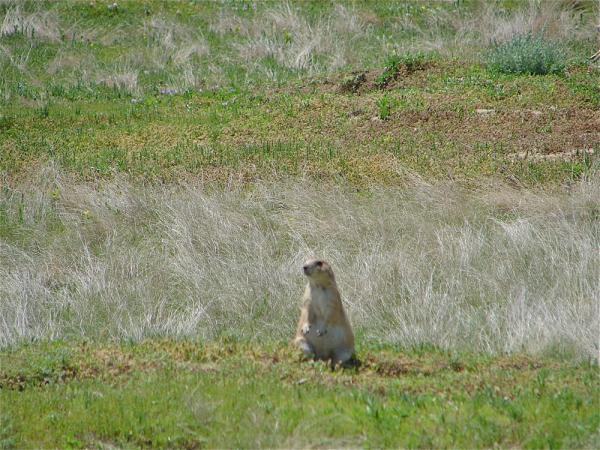
Black-tailed prairie dogs are diminutive, rotund ground squirrels. An adult male will grow to a length of 14 to 17 inches (36 to 43 centimeters) and will weigh from 1 to 3 pounds (0.5 to 1.4 kilograms). The furry coat of the prairie dog can range in colors from the common brown to black, gray and white. The black-tipped tail is characteristic of the species.
Prairie Dog
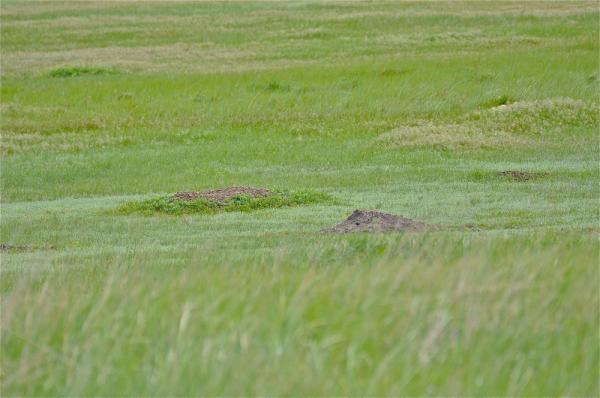
Black-tailed prairie dogs live in underground communities. The dirt pile around the ground entrance creates the look of a small volcano on the grassland prairie. The mound of dirt acts as protection from flooding water entering the underground home. It also provides a great place for the prairie dog to sit and watch for potential predators such as hawks, badgers, coyotes, foxes, bobcats and eagles with whom the black-tailed prairie dogs share the prairie environment.
Prairie Dog
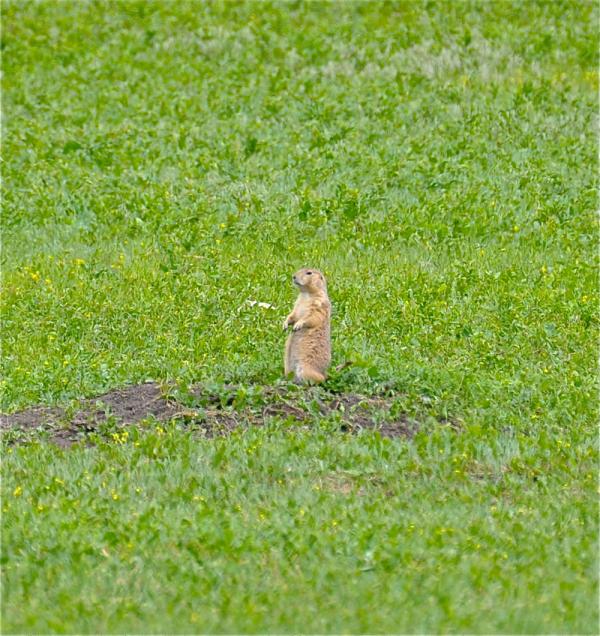
Prairie dogs are very vocal and have many different calls to communicate with family members. They are known to growl, yip, bark, chirp and chatter. When a predator brings danger into a prairie dog town, a distinctive "chirp and wheeze" sound is given and other prairie dogs will imitate the signal across the community. When the danger is gone, the prairie dog will signal the "all clear" by leaping into the air and letting out a loud yip! Soon, the whole town can be seen leaping and yipping as if overjoyed with the passing of danger.
[Related: 10 Amazing Things You Didn't Know About Animals]
Prairie Dog

The entrance to the underground chambers passes down about 3 to 10 feet (1 to 3 meters) before leveling out into a horizontal tunnel that can run 10 to 15 feet (3 to 4.6 m) in length. The home burrow has multiple nesting chambers lined with prairie grass. A separate chamber is used as a bathroom and when full, a new bathroom chamber is dug.
Prairie Dog
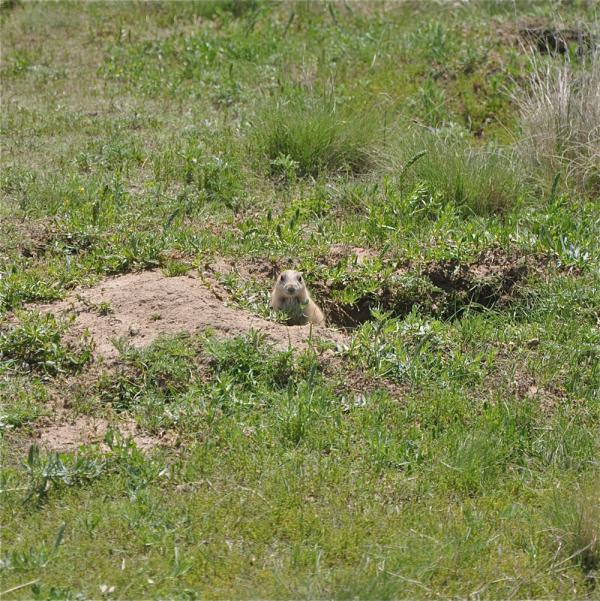
A prairie dog town may be made up of thousands of prairie dogs living in their underground homes. The town is separated into smaller neighborhoods and the neighborhoods are further divided into smaller family groups called coterie. A coterie is made up of one dominant male, one to four females and their young.
Get the world’s most fascinating discoveries delivered straight to your inbox.
Prairie Dog
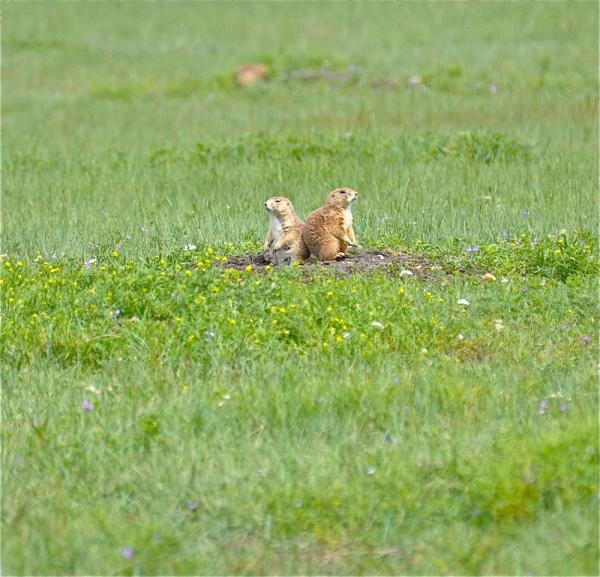
The black-tailed prairie dog is a very social animal. They greet each other by bumping noses or by turning their heads sideways and touching incisors. Much of their day is spent grooming each other. They are very territorial animals and will defend their coterie from other prairie dogs who might enter their area.
Prairie Dog

A major part of each day is spent in grazing the lush, grass prairie. Roots, seeds, stems and leaves of flowering plants are the favorite prairie dog foods. They have been known to also eat grasshoppers, beetles and other insects.
Prairie Dog
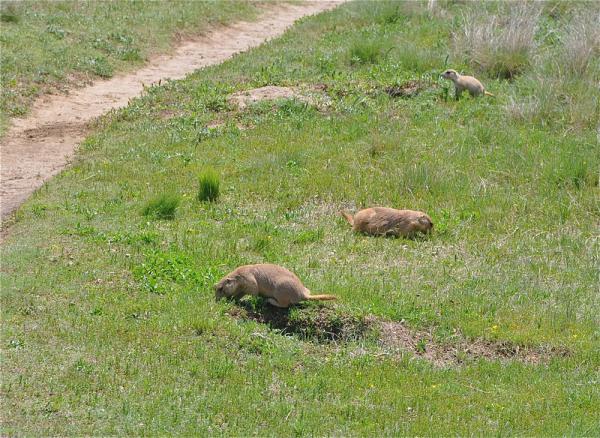
Prairie dogs usually eat all the vegetation near their burrow entrance. This allows them a better opportunity to spot predators. Each fall they attempt to overeat, thus adding a thick layer of fat that allows them to survive the cold prairie winter. Prairie dogs do not hibernate, but will stay inactive in a sleep-like condition for several days when the weather turns extremely cold and snowy.
Prairie Dog

Mating season is from February through March, resulting in three to four pups being born. Gestation period is about 30 days. Black-tailed prairie dog pups are born with their eyes closed and naked. They are weaned after about seven weeks and then venture from their underground burrow for the first time. Since the pups are very susceptible to predators, they stay close to their mother. The female prairie dog is extremely aggressive at this time, even protecting her pups from family members. Black-tailed prairie dogs raise one litter of pups a year.
[Related: The Animal Kingdom's Most Devoted Dads]
